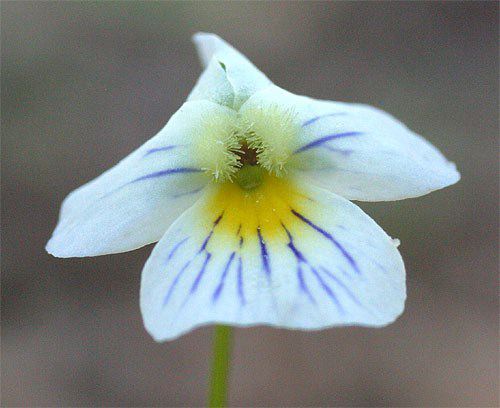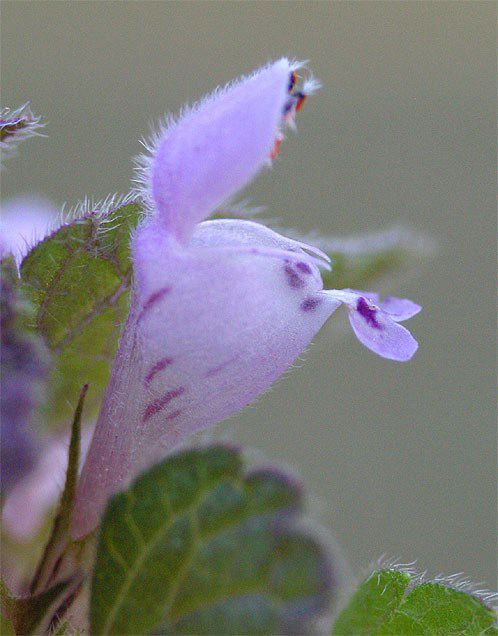|
|
|||
|
|
|||
Back to Preceding Week; on to Next Week
|
FRONT LAWN FLOWERS: With all the recent rain and warm weather in the Carolina Piedmont, most plants have shaken off winter's chill and the four-year drought by commencing new growth. Trees are leafing out--in some cases producing blossoms--and the first spring wildflowers are rising from a carpet of leaf litter in local woodlands. At Hilton Pond Center, heavy grazing and row crops during most of the past century eliminated many spring ephemerals, so our native flora are few in number. Nonetheless, there ARE species of wild plants blooming here if we simply stop and stoop to look more closely. This week we found four tiny flowers--each only a quarter-inch across--growing among the grass on the small patch of lawn in front of the Center's old farmhouse. We suspect that all or most of them are to be found in your yard, too. 
All text & photos © Hilton Pond Center Although it's considered a pest by some gardeners, we've always been enamored with the delicate flower of Chickweed (above), so-called because it often sprouts around hen houses; its seeds are a favorite food of peeps and wild birds. The genus name, Stellaria, refers to the star-like blossom that appears to have ten petals; a closer look reveals there are only five, each split just above its base. Note the five hairy sepals that are shorter than the petals. A similar-looking plant, Cerastium, is also called "chickweed"; both genera include native and introduced species. Pictured here is S. media, a ground-hugging invasive from Europe that blooms and grows prolifically in spring before dying out and disappearing by early summer; it can be identified by a single line of nearly microscopic hairs along the length of its 8" stem. Chickweed's fresh shoots are used as a potherb and have a taste reminiscent similar to fresh spinach.
Bluets, Houstonia spp., are yellow-centered white to purplish wildflowers (above) that bloom from spring through summer in the Carolina Piedmont; they sometimes carpet a lawn so thickly it looks snow-covered. Easily identified by their relatively unusual four-petaled blossoms, one or more of the two dozen native species of Houstonia can be found in most locations across the U.S. and southern Canada. Sometimes called "Quaker-ladies" because the white-blossomed form resemble those women's head coverings, Bluets spend the winter as rosettes--a circle of spoon-shaped leaves that lie flat on the ground. In the case of H. pusilla (above), the plant develops a 3" vertical stem that branches, with each branch bearing two flowers with an eye that is more red than yellow. Although Bluets have complete flowers that contain both kinds of sex organs, each flower functions only as male or female and always requiring cross-fertilization.  One of the most delightful of spring flowers has an equally enchanting common name: Johnny-jump-up. This wild violet--Viola rafinesquii--comes in numerous colors, from the nearly all-white, quarter-inch specimen above to those with petals of pink or purple; all types, however, are marked by noticeable blue veins--especially on the "beard," or bottom petal. (It should be noted that freshly opened Johnny-jump-ups often have more color that apparently bleaches out in direct sunlight.) Many species of Viola have cleistogamous flowers that do not open for fertilization; V. rafinesquii has these, but it also bears chasmogamous blossoms such as the one illustrated here. Some authorities consider the species to be native, while others believe it was introduced from Europe. When this plant's root is crushed it gives a faint odor of wintergreen. (NOTE: The common garden Pansy is a horticultural variety of V. tricolor--a larger violet that also goes by "Johnny-jump-up.")  If you come across a plant in your lawn with a square stem, more than likely it's in the Mint Family (Lamiaceae), and it's probably Henbit. This common "weed" is a miniature mint with miniscule purple or pinkish flowers; like Chickweed--and as its name suggests--Henbit bears seeds favored by poultry. Two species grow in the Carolina Piedmont: Lamium amplexicaule is taller and more common, while L. purpureum (above)--also called Red Deadnettle--has terminal leaves that are often maroon or deep purple and showier and more obvious than the blossoms. This is another non-native species found in waste places, roadsides, lawns, and abandoned fields, where it may even flower during mild winters. The leaves of Henbit are strongly fragrant but not as pleasing to the nose as some other mints. The photos above are large, but it's worth remembering that each of the flowers they depict is only a quarter-inch tall or wide; thus, the illustrations are about 20 times life size! It's not surprising flowers this small may be less familiar than their bigger relatives; they are easily ignored, even when--as at Hilton Pond Center--they grow underfoot. The moral of this story is that not all aspects of nature are grand and showy. As spring unfolds we should make a special effort to seek out phenomena and flowers that are tiny, overlooked, and perhaps growing in your own front lawn. All text & photos © Hilton Pond Center Comments or questions about this week's installment? NOTE: Be sure to scroll down for an account of all birds banded or recaptured during the week, as well as some other interesting nature notes. "This Week at Hilton Pond" is written & photographed You may wish to consult our Index of all nature topics covered since February 2000. You can also use the on-line Search Engine at the bottom of this page. For a free, non-fattening, on-line subscription to "This Week at Hilton Pond," just send us an E-mail with SUBSCRIBE in the Subject line. Please be sure to configure your spam filter to accept E-mails from hiltonpond.org. |
|
Make direct donations on-line through
Network for Good: |
|
|
LIKE TO SHOP ON-LINE?
Donate a portion of your purchase price from 500+ top on-line stores via iGive: |
|
|
Use your PayPal account
to make direct donations: |
|
|
Participate in the Operation RubyThroat: The Hummingbird Project by clicking on the link above |
|
SPECIES BANDED THIS WEEK * = New species for 2003
NOTABLE RECAPTURES (with original banding date, sex, and current age) Chipping Sparrow (1) Pine Warbler (1) Northern Cardinal (3) White-throated Sparrow (3) House Finch (2) |
WEEKLY BANDING TOTAL YEARLY BANDING TOTAL (2003) 16 species 395 individuals BANDING GRAND TOTAL (since 28 June 1982) 123 species 42,509 individuals SIGHTINGS OF INTEREST --A whopping 4.2" of precipitation spread over three different rain events this week again has Hilton Pond spilling over and flowing eventually to the Catawba River. --Eastern Redbuds, Cercis canadensis, finally flowered this week, bringing a flush of pinkish-purple to woodland edges at Hilton Pond Center.
VAGRANT HUMMINGBIRDS None banded this week. |
|
Up to Top of Page Current Weather Conditions at Hilton Pond Center |
 You can also post questions for The Piedmont Naturalist |
Join the |
Search Engine for |
|
|